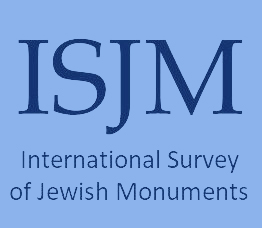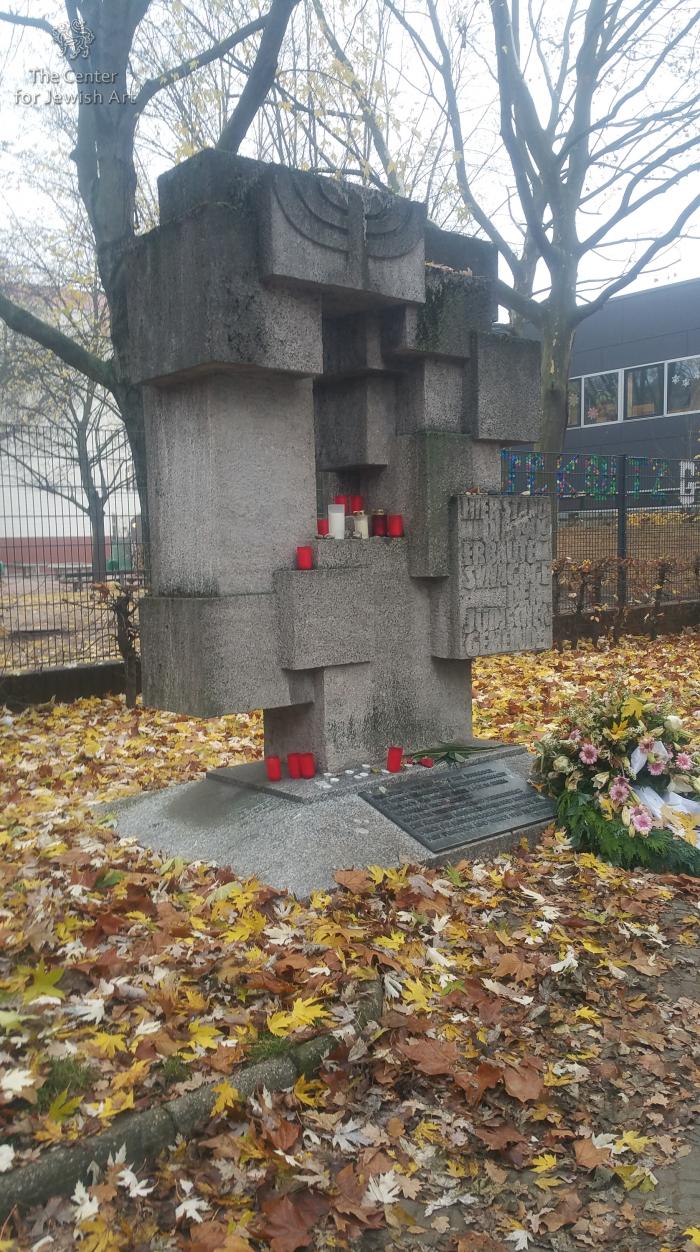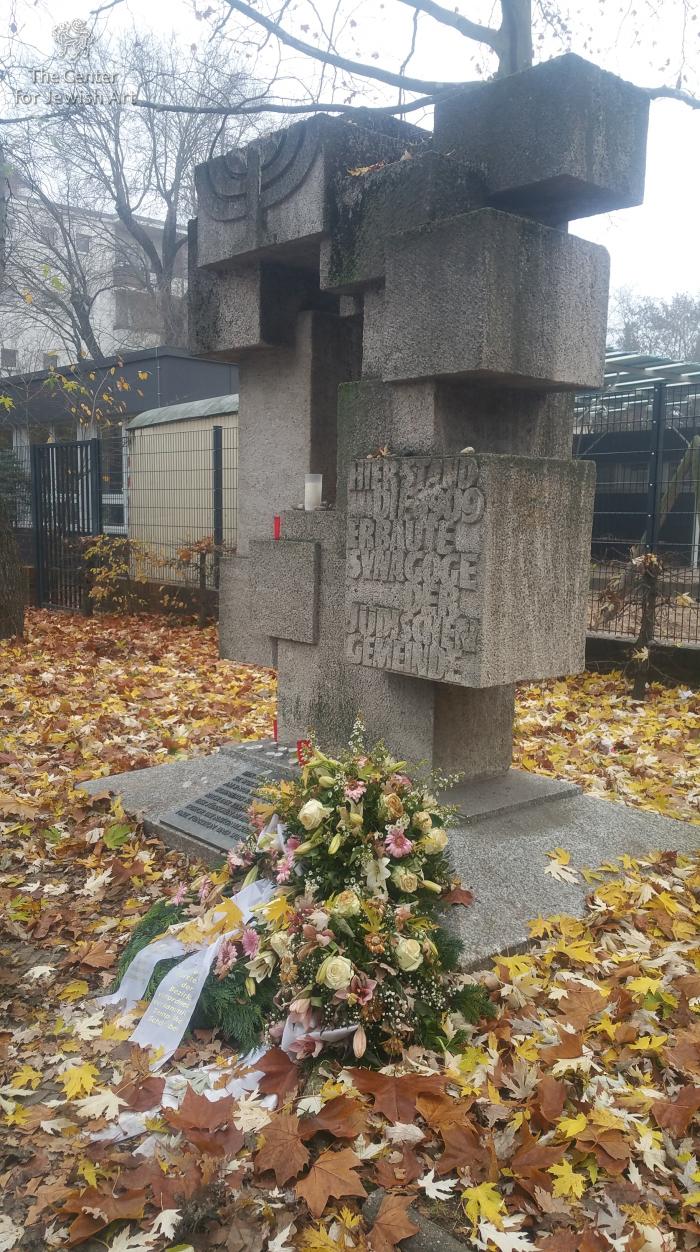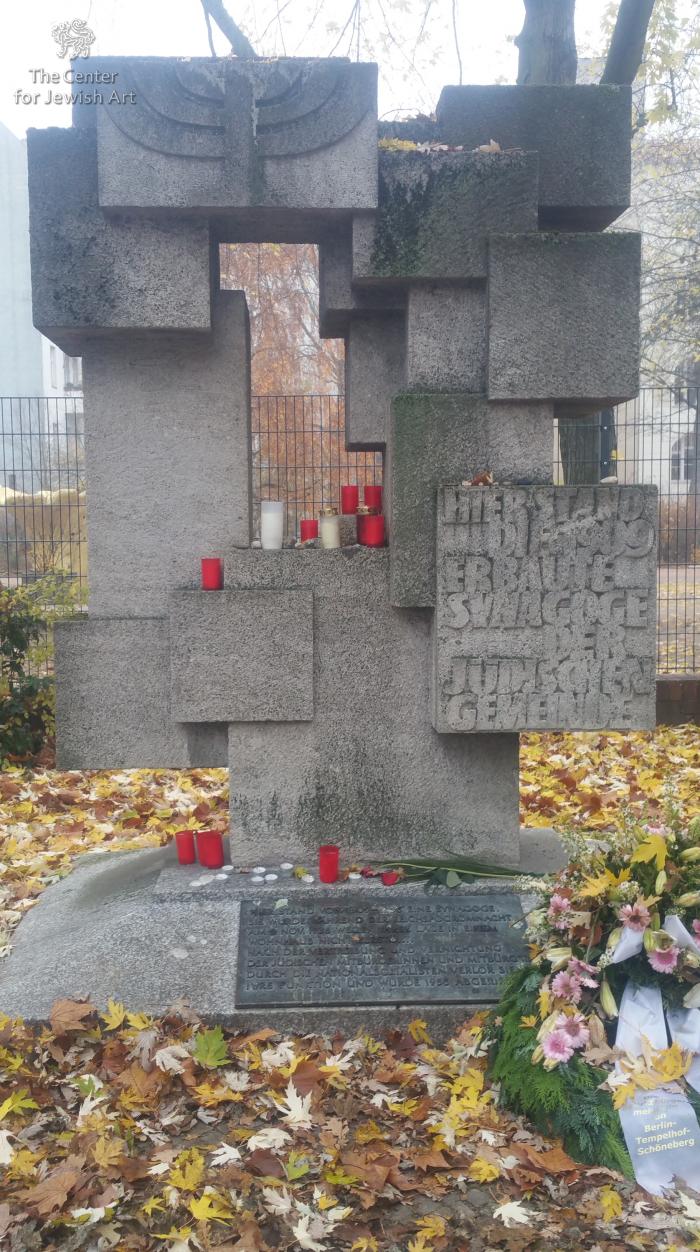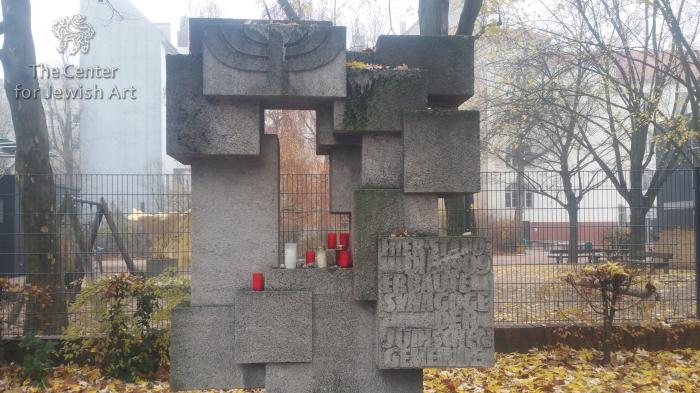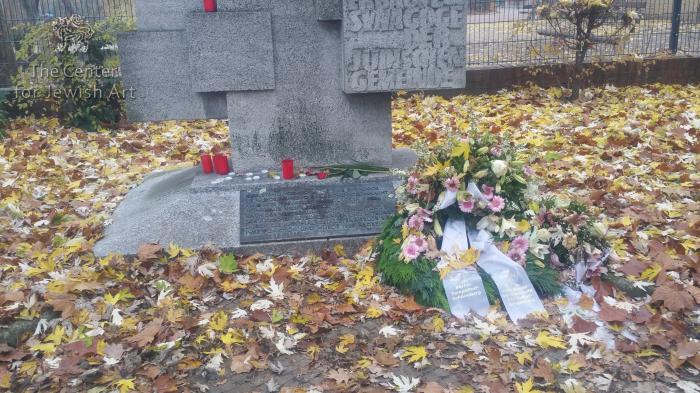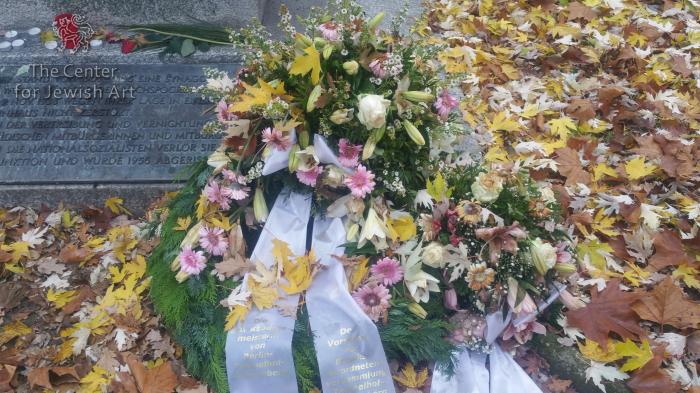Obj. ID: 49683 Monument at the Site of the Synagogue on Münchener Strasse in Berlin, Germany, 1963, 1988

Memorial Name
Monument for the Synagogue on Münchener Strasse
What is Commemorated?
The former synagogue at Münchener Straße 37
Description:
In front of the school and near the street is a freestanding sculptural monument. On a flat base rises an abstract sculpture that consists of thirteen mostly rectangular stone blocks of different sizes attached and arranged to create an upright asymmetrical design. The monument is not a solid wall; the stones are arranged around a central opening through which one can see and reach. The left uppermost stone shows in relief a seven-branch menorah. An inscription carved on the lower right block notes the site's use as a synagogue.
The base was remade and a new bronze plaque with more historical information was added in 1988.
Inscriptions
Carved in large letters on the monument:
Hier stand
die 1909
erbaute
Synagogue
der jüdischen
Gemeinde
Translation: Here stood the Synagogue of the Jewish Community built in 1909.
1988 plaque at the base of the monument:
Hier stand von 1909-1956 eine Synagoge. Sie wurde während der Reichspogromnacht
am 9. Nov. 1938 wegen ihrer Lage in einem
Wohnhaus nicht zerstört.
Nach der Vertreibung und Vernichtung
der jüdischen Mitbürgerinnen und Mitbürger
durch die Nationalsozialisten verlor sie
ihre Funktion und wurde 1956 abgerissen.
Translation: A synagogue stood here from 1909-1956. It was damaged during the Reichspogromnacht on Nov. 9, 1938, but because of its location next to a residential building it was not destroyed. After the eviction and annihilation of the Jewish fellow citizens by the Nazis, it lost its function and was demolished in 1956.
Commissioned by
Bezirksverordnetenversammlung von Schöneberg (Borough Assembly of Schöneberg)
Bronze
The domed synagogue at Münchener Straße 37 in the Schöneberg section of Berlin was designed by Jewish architect Max Fraenkel (1856-1926) and dedicated in 1910. It was at the center of a heavily Jewish neighborhood around Bayerischer Platz. More than 6,000 Jewish neighbors were deported from the Bavarian Quarter. 178 individuals are known to have been deported just from Münchener Strasse.
The synagogue was looted but not burned on Kristallnacht (November 9, 1938), was subsequently damaged by aerial bombing during the war years, and was finally torn down in 1956. The synagogue, made of reinforced concrete, was a transitional structure between historicism and modernism notable for its large dome and as one of the architecturally distinctive buildings in the primarily residential neighborhood. It could seat 836 people (388 women and 448 men0.
A four-story residential building was part of the synagogue complex. It housed living rooms, classrooms, a library, a daycare center, the rabbi's room, and a weekday prayer room. In the rear building was the actual synagogue.
Today, there is a part of a school building on the synagogue site, but the synagogue is remembered in the neighborhood in various ways. Each memorial corresponds to a particular phase of Berlin's facing the past and acknowledgment of the Holocaust.
In March 1960, the Borough Assembly voted to expand the schoolyard of the Löcknitz Elementary School, situated on the part of the footprint of the synagogue. This prompted a call from a Christian Democratic Union member for a memorial to the synagogue. The assembly met again in September 1960 a voted to “dedicate a special section of the school’s courtyard to the synagogue [Goldman, pp. 42-43]. German sculptor Gerson Fehrenbach was chosen to create the memorial.
“Fehrenbach presented three models to the Construction Committee on December 12, 1962. The committee unanimously agreed to the model of the freestanding sculpture, approximately 2.25 x 1.75 x 0,8 m. Fehrenbach’s family recalls that the artist was approached by the commissioners and submitted an already-existing sculpture—Komposition—of 1958, one of the cube sculptures with which he was already working...” [Goldman, p. 44].
Art historian Natasha Goldman has written about the 1963 monument at length and calls it “an ambivalent memorial, both in terms of its visual elements and in terms of the accompanying textual information” [Goldman, p. 36].
In 1988, on the 50th anniversary of Kristallnacht, the monument was refurbished, and a new base and plaque were added that provide more information about the destruction of the synagogue and the deportation and murder of the neighborhood’s Jewish population.
In addition to Fehrenbach’s abstract street-level monument of 1963 seen here, there is a student-built collaborative memorial from the 1990s and an extensive photo exhibit underground in the nearby U-Bahn station installed in the early 2000s.
Goldman, Natasha. Memory Passages: Holocaust Memorials in the United States and Germany (Philadelphia: Temple University Press, 2020)., pp. 35-52.
Gruber, Samuel D. “Germany: Multiple Memorials for Berlin's Munchener Strasse Synagogue,” Samuel Gruber’s Jewish Art & Monuments. February 6, 2017., https://samgrubersjewishartmonuments.blogspot.com/2017/02/germany-multiple-memorials-for-berlins.html (accessed December 22, 2021)
Noetzel, Karen. “Erinnerung an die Synagoge in der Münchener Straße ,” Berliner Woche, March 15, 2020., https://www.berliner-woche.de/schoeneberg/c-kultur/erinnerung-an-die-synagoge-in-der-muenchener-strasse_a255937#gallery=null (accessed May 24, 2023)



